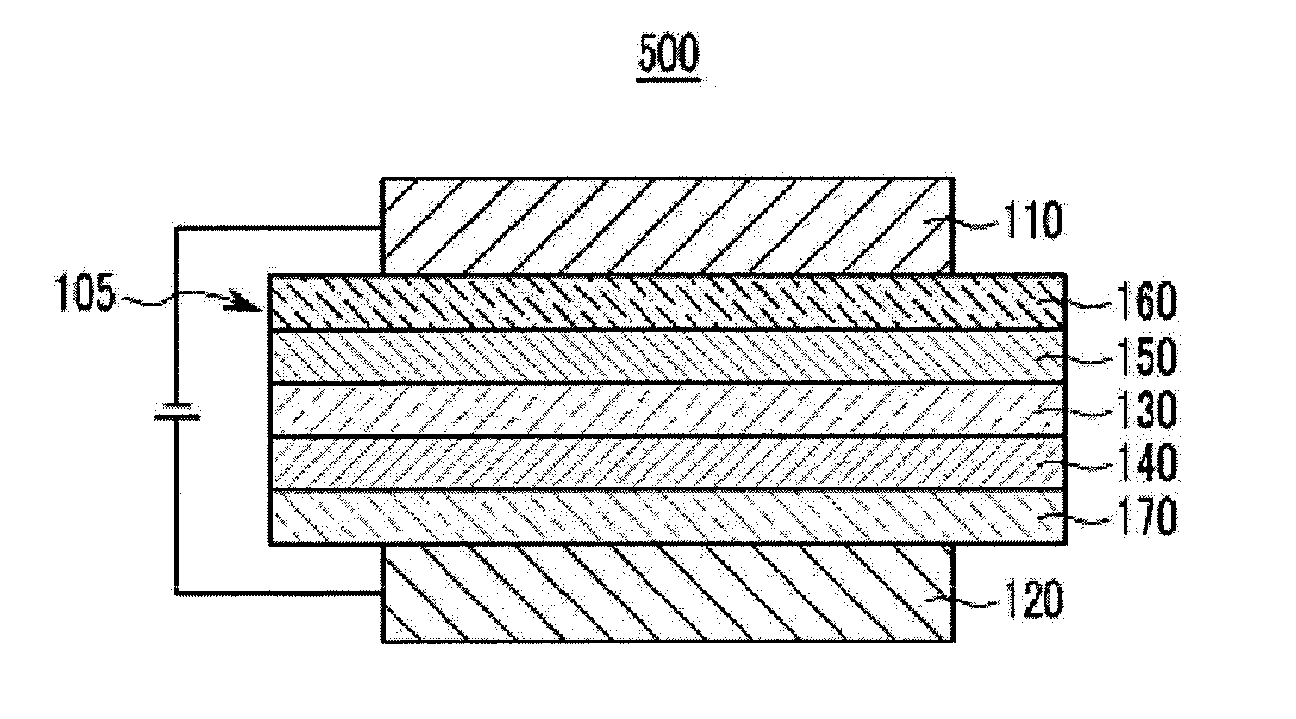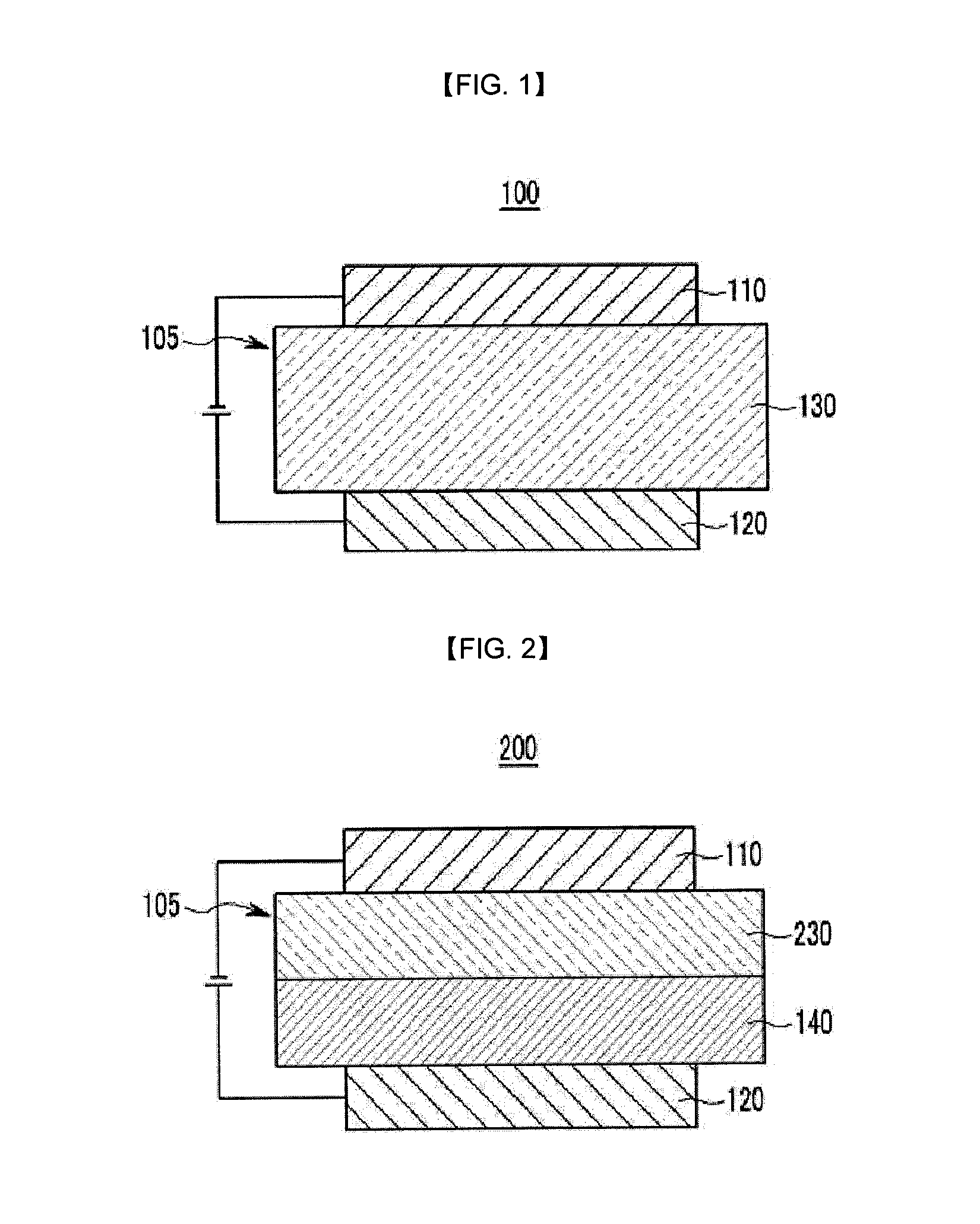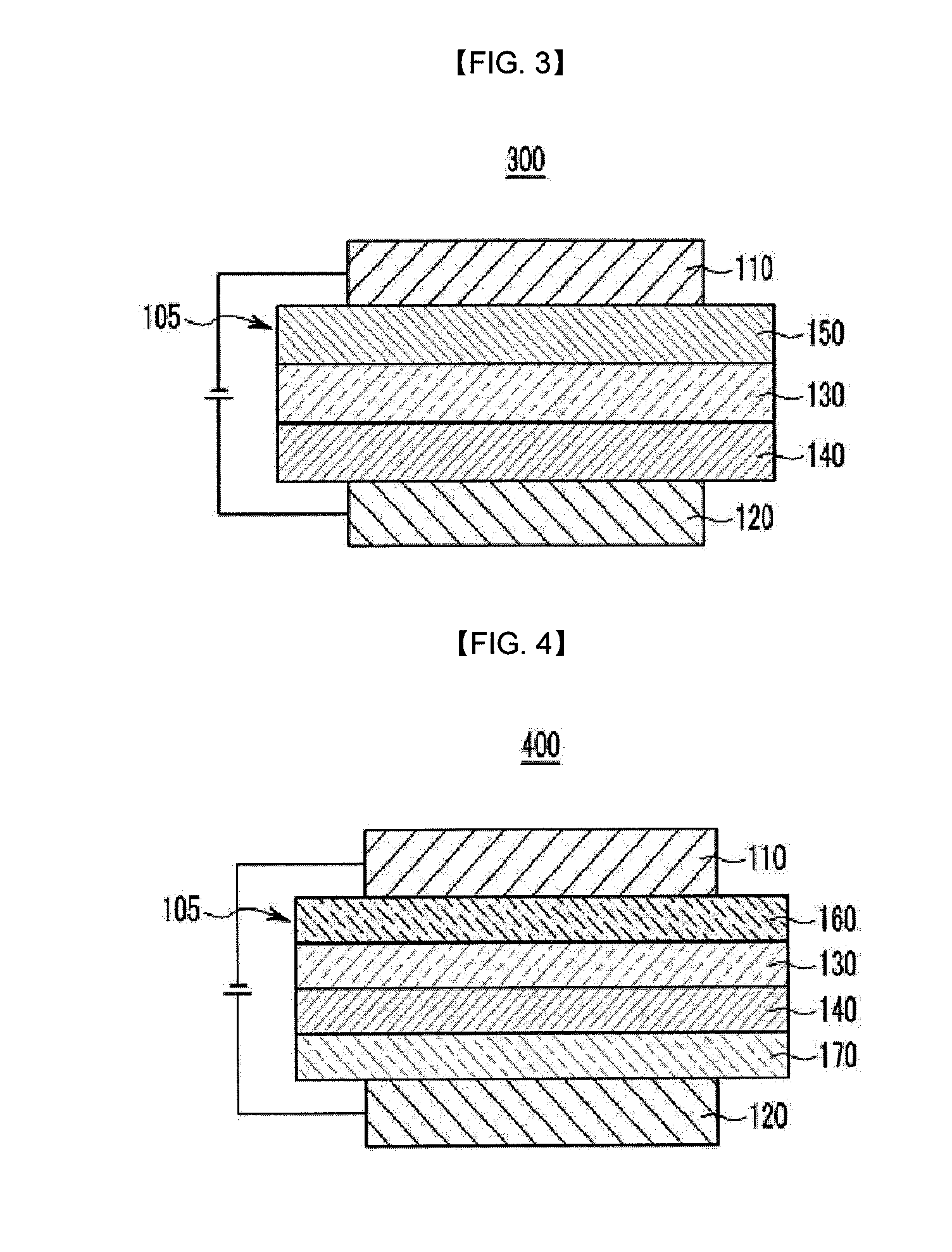Compound for organic optoelectronic device and organic light emitting diode including the same
a technology of optoelectronic devices and organic light, applied in the direction of luminescent compositions, thermoelectric devices, organic chemistry, etc., can solve the problems of device efficiency decline, color purity may decrease, maximum light emitting wavelength may be shifted to a long wavelength,
- Summary
- Abstract
- Description
- Claims
- Application Information
AI Technical Summary
Benefits of technology
Problems solved by technology
Method used
Image
Examples
example 1
Synthesis of Compound Represented by Chemical Formula B2
[0147]A compound represented by Chemical Formula B2 as a specific example of a compound for an organic optoelectronic device according to an example embodiment was synthesized according to the following Reaction Scheme 1.
[0148]First Step: Synthesis of Compound A
[0149]41.6 g (160 mmol) of N-(4-chlorophenyl)-1,2-phenylene diamine and 33 g (180 mmol) of biphenyl-4-carboxaldehyde was agitated with 300 mL of 2-methoxy ethanol in a 2000 mL round flask, and the agitated mixture was agitated for 24 hours after increasing the temperature of the reaction vessel to a reflux temperature. The reaction solution was treated with methylene chloride to obtain an organic layer, and anhydrous magnesium sulfate was used to remove moisture from the organic layer. 30 g of a compound (A) (40% yield) was obtained by columnizing the reactant after removing the solvent therefrom.
[0150]The compound (A) was atomically analyzed, and the results are provide...
example 2
Synthesis of Compound Represented by Chemical Formula B3
[0156]A compound represented by Chemical Formula B3 as a specific example for an organic optoelectronic device according to an example embodiment was synthesized according to a method of the following Reaction Scheme 2.
[0157]First Step: Synthesis of Compound (C)
[0158]48.5 g (210 mmol) of N-(4-chlorophenyl)-1,2-phenylene diamine and 33 g (210 mmol) of 1-naphthaldehyde were agitated with 300 mL of 2-methoxy ethanol in a 2000 mL round flask, and the agitated reactant was agitated for 24 hours after increasing the temperature of the reaction vessel to a reflux temperature. The reaction solution was treated with methylene chloride and water to obtain an organic layer, and anhydrous magnesium sulfate was used to remove moisture from the organic layer. 30 g of a compound (C) (40% yield) was obtained by columnizing the reactant after removing a solvent therefrom.
[0159]Atomic analysis of the obtained compound (C) was performed, and the ...
example 3
Synthesis of Compound Represented by Chemical Formula B16
[0167]The compound represented by Chemical Formula B16 as a specific example of a compound for an organic optoelectronic device according to an example embodiment was synthesized according to the following Reaction Scheme 3.
[0168]First Step: Synthesis of Compound (D)
[0169]25 g (110 mmol) of N-(4-chlorophenyl)-1,2-phenylene diamine and 20 g (110 mmol) of biphenyl-4-carboxaldehyde were agitated with 300 mL of 2-methoxy ethanol in a 2000 mL round flask, the temperature of the reaction vessel was increased up to a reflux temperature, and the resultant was agitated for 24 hours. The reaction solution was treated with methylene chloride and water to obtain an organic layer, and anhydrous magnesium sulfate was used to remove moisture from the organic layer. 12 g of a compound (D) (28% yield) was obtained by columnizing the resultant after removing a solvent therefrom.
[0170]Atomic analysis of the compound (D) was performed, and the re...
PUM
 Login to View More
Login to View More Abstract
Description
Claims
Application Information
 Login to View More
Login to View More - R&D
- Intellectual Property
- Life Sciences
- Materials
- Tech Scout
- Unparalleled Data Quality
- Higher Quality Content
- 60% Fewer Hallucinations
Browse by: Latest US Patents, China's latest patents, Technical Efficacy Thesaurus, Application Domain, Technology Topic, Popular Technical Reports.
© 2025 PatSnap. All rights reserved.Legal|Privacy policy|Modern Slavery Act Transparency Statement|Sitemap|About US| Contact US: help@patsnap.com



